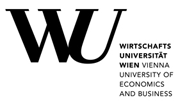Department of Economics Working Papers,
Vienna University of Economics and Business, Department of Economics
No 352: Infection Risk at Work, Automatability, and Employment
Ana L. Abeliansky (), Klaus Prettner () and Roman Stoellinger ()
Additional contact information
Ana L. Abeliansky: Department of Economics, Vienna University of Economics and Business
Klaus Prettner: Department of Economics, Vienna University of Economics and Business
Roman Stoellinger: Department of Economics, Vienna University of Economics and Business
Abstract: We propose a model of production featuring the trade-off between employing workers versus employing robots and analyze the extent to which this trade-off is altered by the emergence of a highly transmissible infectious disease. Since workers are - in contrast to robots - susceptible to pathogens and also spread them at the workplace, the emergence of a new infectious disease should reduce demand for human labor. According to the model, the reduction in labor demand concerns automatable occupations and increases with the viral transmission risk. We test the model's predictions using Austrian employment data over the period 2015-2021, during which the COVID-19 pandemic increased the infection risk at the workplace substantially. We find a negative effect on occupation-level employment emanating from the higher viral transmission risk in the COVID years. As predicted by the model, a reduction in employment is detectable for automatable occupations but not for non-automatable occupations.
JEL-codes: I14; J21; J23; J32; O33 December 2023
Note: PDF Document
Full text files
WP352.pdf
Report problems with accessing this service to Sune Karlsson ().
RePEc:wiw:wiwwuw:wuwp352This page generated on 2025-09-20 04:36:37.

